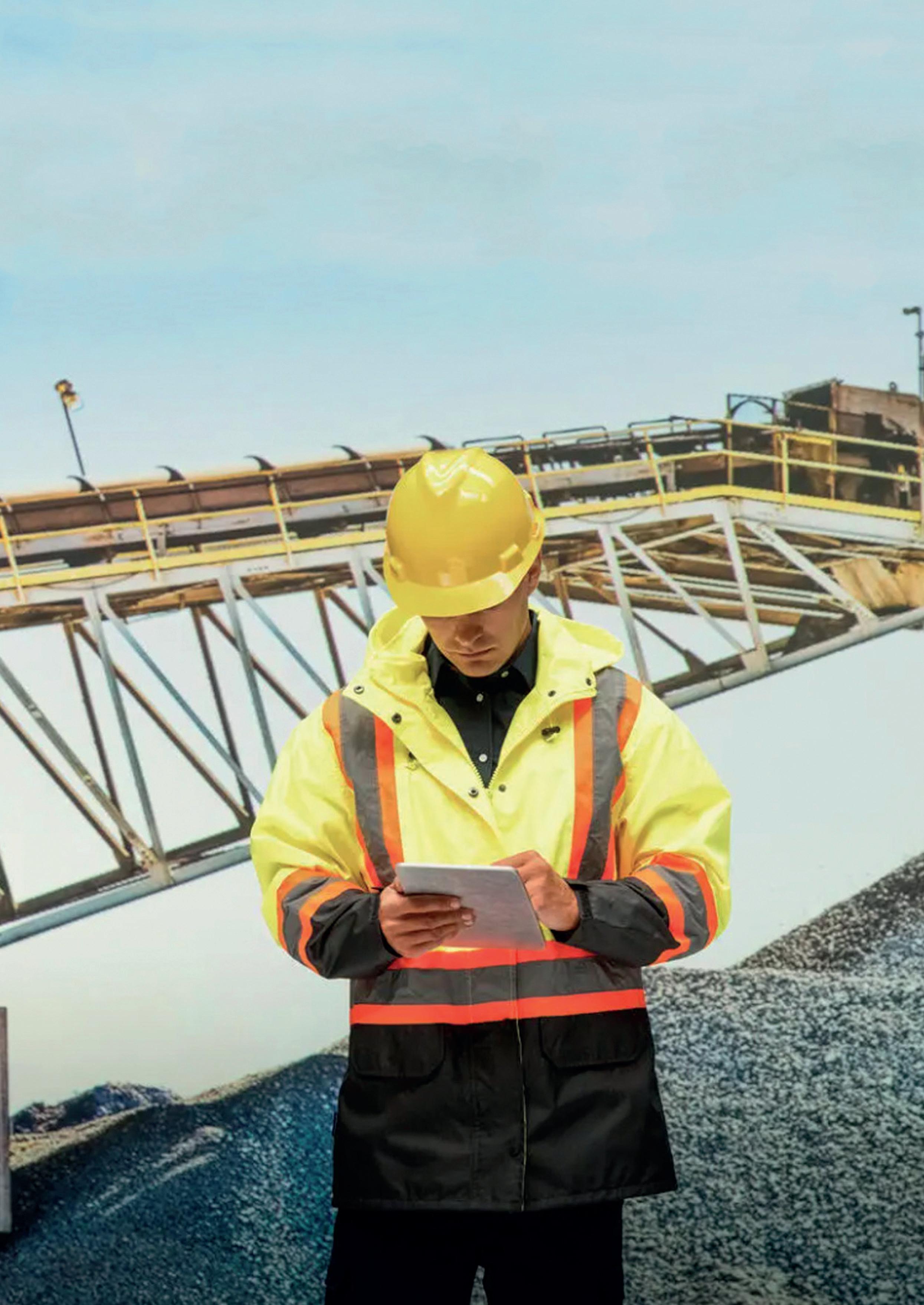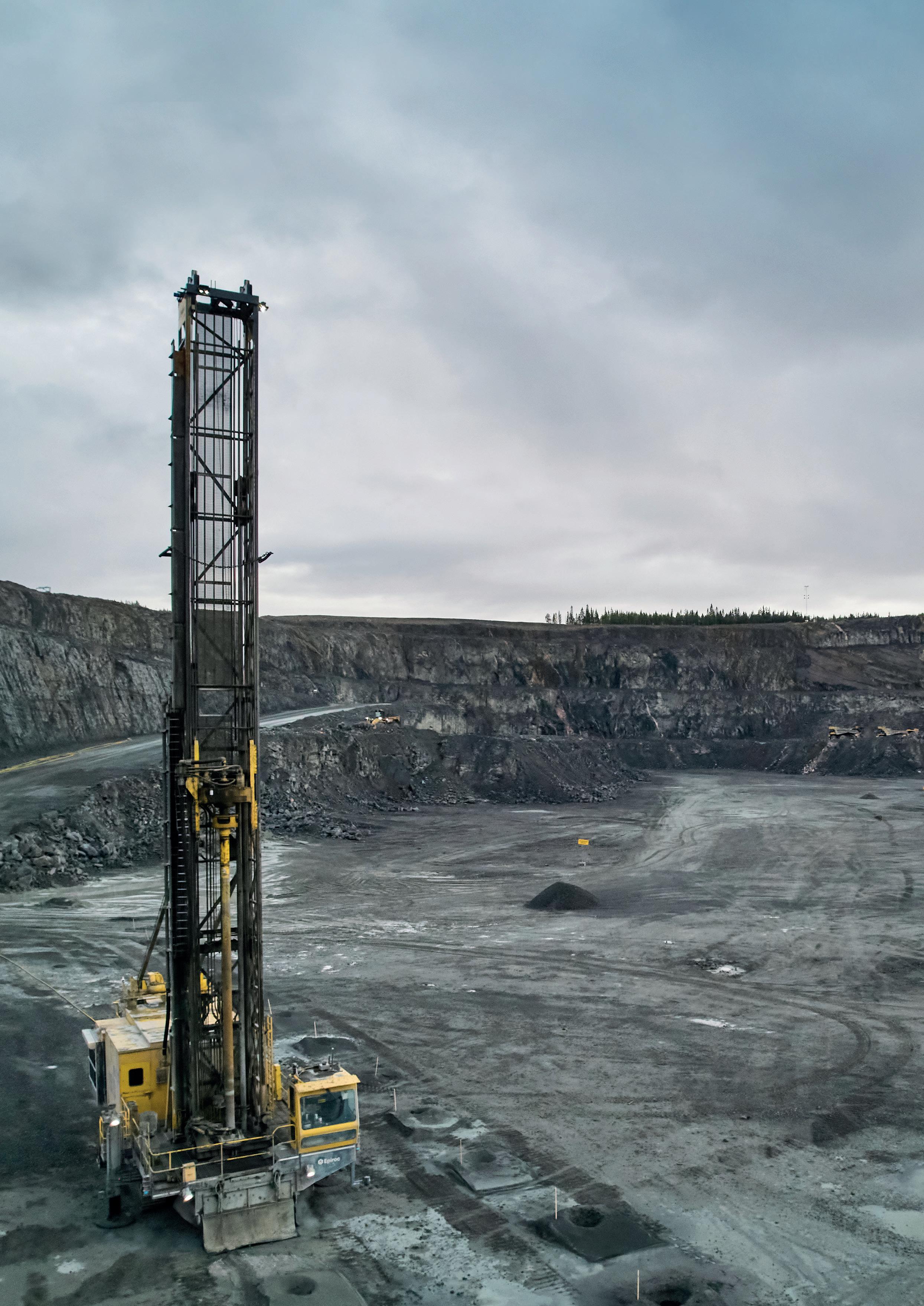
9 minute read
Breaking Down Deployment Barriers
Karol Bartodziej, FAMUR SA, Poland, provides insight into the remote deployment of mining automation systems, with a focus on longwall operations.
Enterprise digitalisation has been talked about for several decades. More hardware and software solutions have been gradually deployed in companies, but it was not until the COVID-19 outbreak that many companies were forced to actually implement full-scale digital solutions that enable remote work. The need to change the approach to daily tasks, which came as a surprise to everyone, helped break down many psychological barriers in business. One such barrier was the belief that the deployment of a new type of equipment at a longwall mining production could not take place without the direct presence of the service personnel of the equipment manufacturer. This belief was still particularly strong for longwalls with high levels of automation.
Remote deployment
FAMUR Group has been trying to implement similar tools for years, but the fact that customers were so used to the direct presence of service personnel on site resulted in this remote support taking place more frequently between the service technician and engineering departments, rather than between the user and the service technician. The GoGlobal strategy adopted by the company assumed organisational and hardware preparation for cases in which service or deployment support would have to be carried out using IT tools, instead of the traditional presence of a deployment team at the customer’s premises. While the concerns associated with this methodology of conducting deployment are numerous, remote deployment offers one definite advantage – a lack of necessity for the long-term business travel of employees participating in the commissioning process. This results in the fact that, if necessary, even quite a large group of the most experienced engineers who designed a particular machine or piece of equipment can participate in these activities, compared to the traditional deployment process which usually involves only one person from the service and deployment team.
Remote diagnostics
Adjustments of the parameters or diagnostics of modern mining equipment or machines very often requires a direct connection of specialised diagnostic tools to the communication buses of the unit. In classical mining equipment, this meant that a service technician with appropriate training had to physically travel to the underground mine. This problem becomes even more perceptible when the machine is operating thousands of miles from the manufacturer’s headquarters.
For many years, the company has been trying to engineer its machines so that diagnostics are available from the Ethernet network, which enables diagnostics not only in the direct vicinity of the machine, but also from any location – after appropriate network connections, using the internet.
As part of the GoGlobal strategy, equipment and machine control systems were gradually modified to enable remote diagnostics and adjustments. FAMUR, expanding its sales network to new markets often very distant from the nearest headquarters of the company, assumed that it must provide foreign customers with service response time and support at the same level as those located close to the company offices. This vision required the implementation of a new generation of machine control system components, so that each component can enable full remote diagnostics. It was also necessary to develop competences in building network infrastructure required to connect the machine being operated underground with the company’s Service Centre, as well as to ensure an appropriate level of cyber security for these connections.

Case studies
Some examples of the application of these technologies include two deployments of longwall systems that had to be carried out 100% remotely, as a result of cross-border travel restrictions caused by the COVID-19 pandemic.
One was the deployment of the Mikrus type complete longwall system for the automatic mining of thin coal seams at China Energy’s Shigetai mine in Shaanxi province, China. The other was the commissioning of a longwall system in Desa Manunggal Jaya, near the city of Samarinda, Indonesia, in a mine owned by PT Gerbang Daya Mandiri. In both cases, the scope of delivery included the mining machine and scraper conveyor, as well as complete power supply and control equipment for the longwall system, including the machine operation visualisation system.
In these examples, the commissioning of the complete system was completed using remote supervision tools – the manual activities on site were performed by persons who had no prior contact with the equipment, nor had the opportunity to receive training at the manufacturer’s headquarters.
Case study: China
In the case of the Mikrus complex, the longwall had to be operated in fully automatic mode. Anyone with experience in commissioning these types of systems knows how many fine-tuning steps are required for the control subsystems so that the interaction of individual machines can work properly. Tuning such systems usually requires multiple days of collaboration between automation programmers working side-by-side at the facility with the programmers of the remaining co-operating components. It is necessary to observe the actual behaviour of the machines after successive iterations of changes have been made, and to catch any anomalies or undesirable behaviour.
In this case, that opportunity for direct side-by-side co-operation was not an option. Two key elements of the longwall automation system, i.e. the electro-hydraulic control system for the powered roof support and the safety interlocks system, were not supplied by FAMUR, but by local
Chinese suppliers, while the supervisory control system for the entire longwall was within the company’s scope of supply. This division of the supplied equipment resulted in a lack of opportunity to work out the interfacing algorithm for these three systems in the company’s headquarters – this was supposed to take place during the commissioning on site, at the customer’s premises. The inability of the programming team responsible for the operation of the automated longwall that was to arrive at the mine seemed to be a barrier difficult to overcome. It was difficult to assume that this work could be done remotely. Since it looked like the cross-border restrictions would stay in place for an extended period of time, it was decided together with the customer that, despite these inconveniences, an attempt would be made to start up the complex remotely.
In retrospect, attempting to commission remotely was a good decision. As of the writing of this article, two years after the start-up of the longwall complex, cross-border restrictions between Europe and China are still very high and there are long quarantines upon arrival in China – this would certainly hinder the attempt to assemble the necessary team at the right time with the group of machines put together at the customer’s premises. Through the use of SmartMine remote monitoring tools, VPN connections and video conferencing solutions, this commissioning was successfully carried out and a fully automatic operation of the longwall was achieved.

Figure 1. The Mikrus longwall system is dedicated for mining low coal seams in automatic mode.
Figure 2. The Mikrus system remote operator’s cabin located underground in the maingate tunnel, near the longwall face.
Figure 3. The surface remote operator stand of the Mikrus longwall system. Case study: Indonesia


A similar case was the Desa Manunggal Jaya longwall in Indonesia. In this scenario, however, although the longwall did not have to be operated in fully automatic mode, commissioning was equally challenging. The scope of supply included, among other solutions, a complete set of power supply and control equipment with a safety system. Adjusting the parameters of this type of system usually requires tuning the settings to the facility in which it is operated, so not being able to stay on site at the customer’s premises was a challenge for the manufacturer's deployment team. This was also the first such extensive automation system to be deployed by the company in Indonesia, so adapting to user habits and local regulations required much more work than in markets where the company has been operating for years.
As with the Mikrus complex in China, the SmartMine remote monitoring and control system and video conferencing solutions proved indispensable. The novelty, in this case, was the use of augmented reality (AR) tools during the assembly and parameters adjustment of the equipment in the underground part of the mine. The person underground was equipped with AR glasses and remained in audio-video communication with the FAMUR Group Service Centre. As a result of the AR glasses, the person working at the machine received visual guidance regarding the next steps that needed to be taken and the relevant parts of the machine’s documentation in real time, which greatly facilitated their work underground. This longwall was successfully commissioned in July 2021 and achieved the intended production within the time frame expected by the customer.
Training
Seeing the challenges posed by the need to provide certain services remotely to its customers, the FAMUR Group implemented a dedicated multimedia room used for deployment and training in its headquarters – with the use of both classical videoconferencing solutions and virtual reality (VR) and AR technologies.
VR solutions are mainly used for training purposes. The trainee has the opportunity to use a full 3D model of the machine to get acquainted with its engineering design, as well as with the methods of carrying out service repairs. The prepared training environments give the opportunity to conduct the same training on site at the customer’s premises, without the need to travel to the manufacturer’s training centre – it is enough to provide a VR kit (goggles and manipulators) to be able to conduct training remotely.
AR technology is a tool used for different purposes. The use of AR technology means it is possible to support the service technician or the end user by superimposing visual guidelines and comments by the manufacturers’ employee on the view of the machine seen by the user. This facilitates providing ongoing instructions for the person at the machine while the work is being performed. In this way, it is sufficient to have just one person with basic manual skills on site to perform manual work. AR technology also allows training to be conducted for the user at the actual machine, while the training instructor is in an entirely different corner of the globe. Then, an image of the actual machine at the customer’s site – as seen by the trainee through AR glasses – is superimposed on the guidelines from the remote instructor.
Conclusion
Recent years have brought many unexpected setbacks to companies around the world as they conduct their daily business. When choosing a partner for co-operation, especially in the area of supplying machines key for the operations of a given company, it is crucial to have a partner on the other side who is ready to provide a full range of services, even when a personal presence of service personnel at the customer’s site is not possible. The presented systems for the remote supervision of machine operation, as well as VR and AR solutions, are an excellent example of how, in these difficult realities, the industry can remain flexible and seamlessly perform foreign contracts for the supply of mining machinery and automation systems.

Figure 4. The use of augmented reality glasses during deployment works in an underground mine, Indonesia.
Figure 5. Training in the field of service repairs of a longwall shearer, with the use of VR technology.

Rely on











